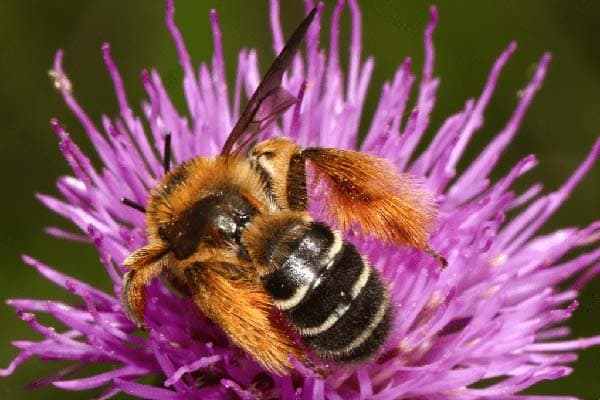Why should we care about attracting more birds and bees to our home landscapes?
According to a study in Science, more than 1 in 4 birds have disappeared in North America in the last 50 years. As reported by Audubon: “The study found that grasslands have lost nearly 720 million birds since 1970- a greater than 40 percent decline.” If stats like that don’t spur each one of us to action, I don’t know what will!
As for bees, studies estimate that there are greater than 850 different varieties of native bees in Canada alone. I find those numbers absolutely incredible! Incredibly saddening, however, is that as many as 1 in 4 of our native bumblebees are at risk. To learn more about the bees in your backyard, I recommend studying the highly detailed book ‘The Bees in Your Backyard: A Guide to North America’s Bees’.
Meanwhile, read on to find out what you can implement quite easily in your own yard to help out our feathered and winged friends.
Plant native flowers and grasses
Diverse plantings of native flowers are essential to support a diverse number of birds and bees. Not only will the native birds and bees appreciate it, but it’s also great for all the other living creatures out there.
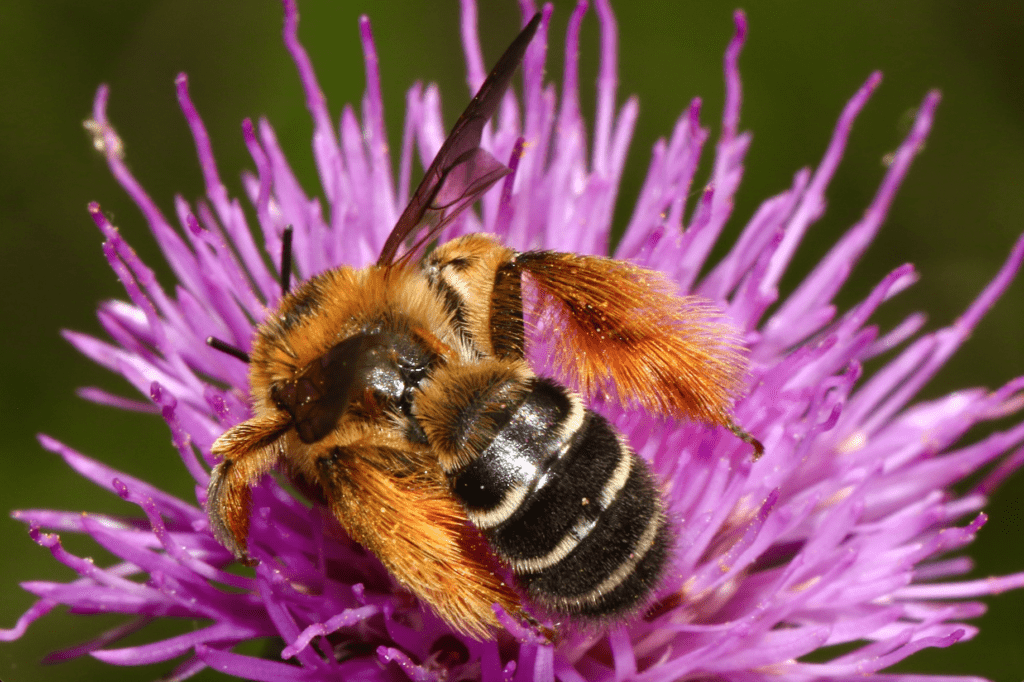
If you’re not much of a gardener, find a native plant nursery near you and get some advice regarding your flower and grass choices. Generally, they’ll know their plants inside out and backwards, and will be able to steer you in the right direction. Just bring along some information regarding your planting site, ie sun exposure, moisture levels, size of the bed etc.
Another great resource are articles and blogs written by Benjamin Vogt. The two-word slogan at the bottom of his website explains succinctly what he’s passionate about: ‘reprairie suburbia.’
If space is limited and you can only choose a few varieties, take the time to watch some really educational videos by Doug Tallamy. Included in Doug Tallamy’s “keystone species” (lists of trees, plants etc which he believes are invaluable in terms of their contribution to native insect and bird populations), are goldenrod, asters, sunflowers, and blackeyed Susan, to name a few.
Include a water source
Birds and bees need water too! Include a simple birdbath for the birds. For areas with cold winters, a heated birdbath to keep ice at bay would be necessary.
A shallow dish of water will do just fine for the bees. Add a few pebbles that reach above the level of the water, so bees can perch on them safely and sip away. Place these in a shady, sheltered area of your yard and be sure to clean them out periodically.
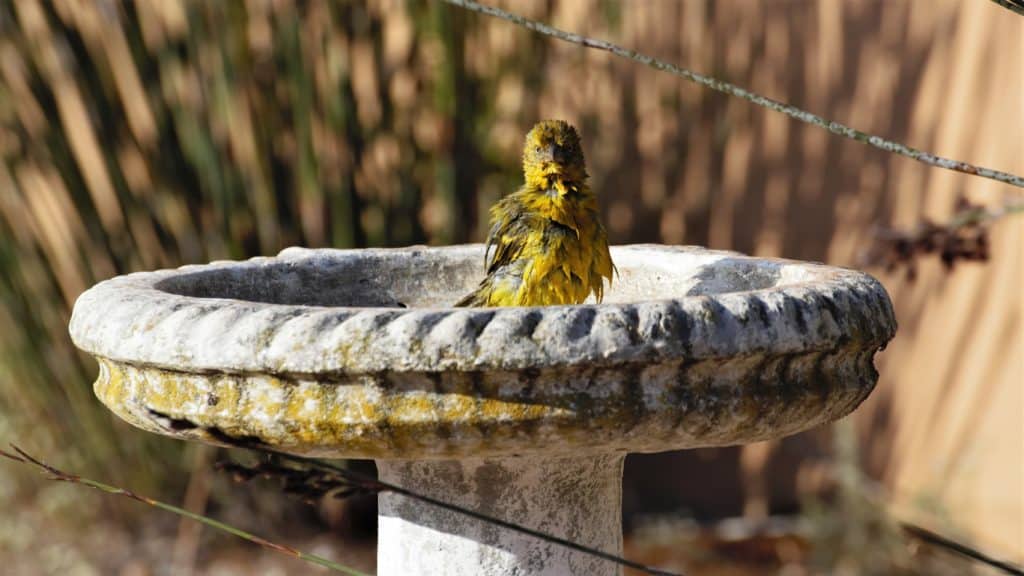
No pesticides or herbicides
Sadly, so much damage is done to so many birds and insects (not to mention ourselves!) by all the chemicals that are sprayed on our lawns, gardens, and trees. Please avoid them at all costs!
It certainly is possible to have a perfectly neat and respectable looking yard without resorting to pesticides and herbicides. Once your yard is in a healthier state by following my tips, the natural balance of wildlife and insects should sort out most pest issues on its own.
Cut back on your lawn
I realize those acres of perfectly manicured green lawns are beautiful and satisfying to look at for most of us. But when you learn that these lush green acres support very little wildlife, it’s hard to appreciate them anymore.
Consider transitioning part of your lawn into a native area to support native wildlife and insect populations. Or, if you’re an enthusiastic gardener (or simply enthusiastic and willing to learn) feel free to get rid of the lawn entirely and create a beautiful native planting.
Significant work and money is required initially (don’t let anyone tell you otherwise), but once established it can be a low maintenance, ecologically friendly and beautiful statement. I firmly believe it is very much worth the time and monetary investments!
Improve your soil health
More worms and other insects = more food for birds. Better soil health = better plant growth. Better plant growth = more food and shelter for birds and bees. Win win win! See this post for more detail about how to go about improving your soil health.
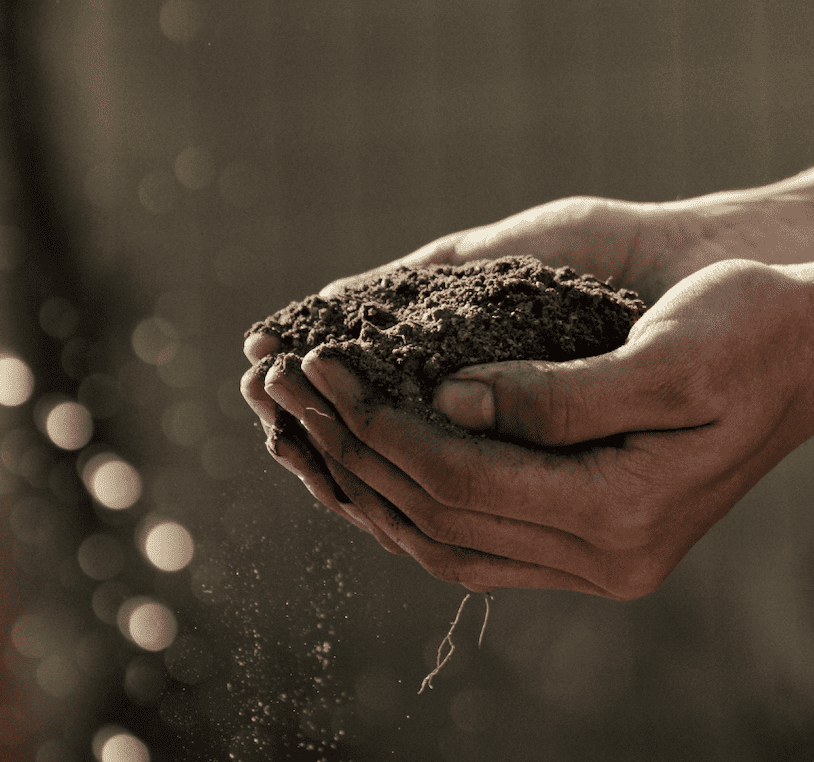
Include year round blooms
Be sure to include a wide variety of plants that bloom from early spring to late fall to provide food for the bees. This is similar to my first suggestion, but it’s important enough to warrant its own mention.
Many blossoming shrubs and trees could fulfil the spring bloom season, while asters and goldenrods are especially great for late fall. When choosing your plants, be mindful of having a continuous supply of flowers for the bees (and for your own viewing pleasure!).
Leave your garden for the winter
Why is it ingrained in us to cut all perennials and garden plants back in the fall? As Piet Oudolf would say, “Brown is also a color.” And not only can winter gardens be incredibly sculptural and textural, beautiful with or without snow cover, but seed heads will feed our feathered friends that stay around all year.
In addition, many insects overwinter burrowed inside stems or in the dirt. Ideally, leave everything as is until late spring, when the bees are out and about again and there’s little danger of chopping a little hibernating creature in two when cutting down some old stems.
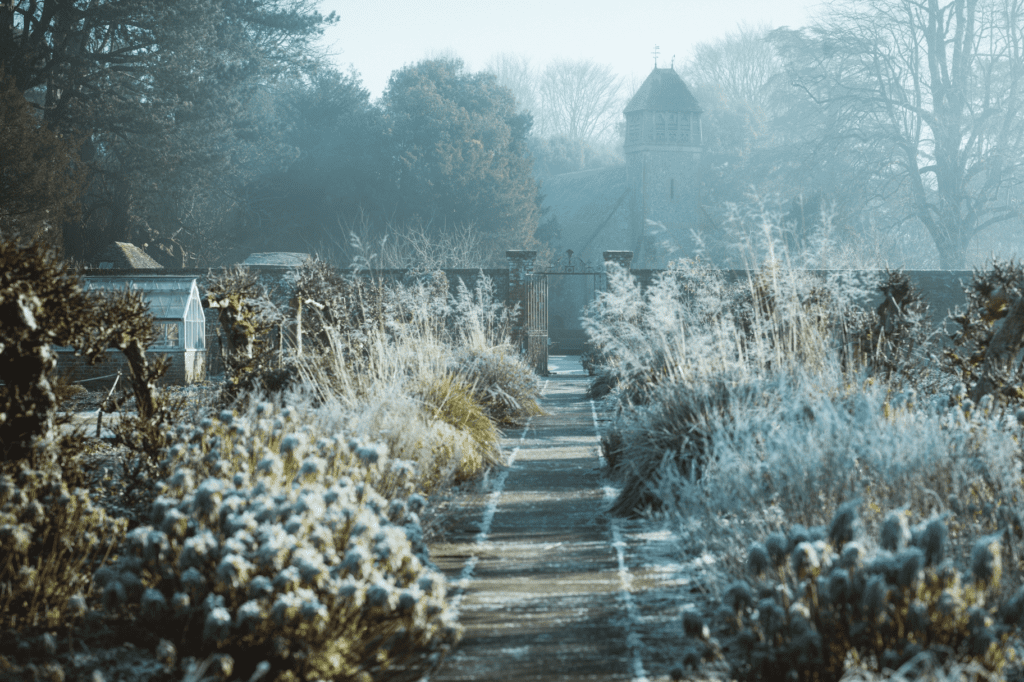
Plant native trees and shrubs
There are many native trees and shrubs that will provide habitat and food for our birds and bees, alongside countless other living creatures! First, survey your landscape to determine how much sun and moisture your planting location receives. Research which native trees and shrubs will best suit your location.
To source native trees and shrubs, you may wish to find a native plant nursery near you. Some will offer consultations, where for a small fee they will meet with you and offer advice on which varieties will best suit your location.
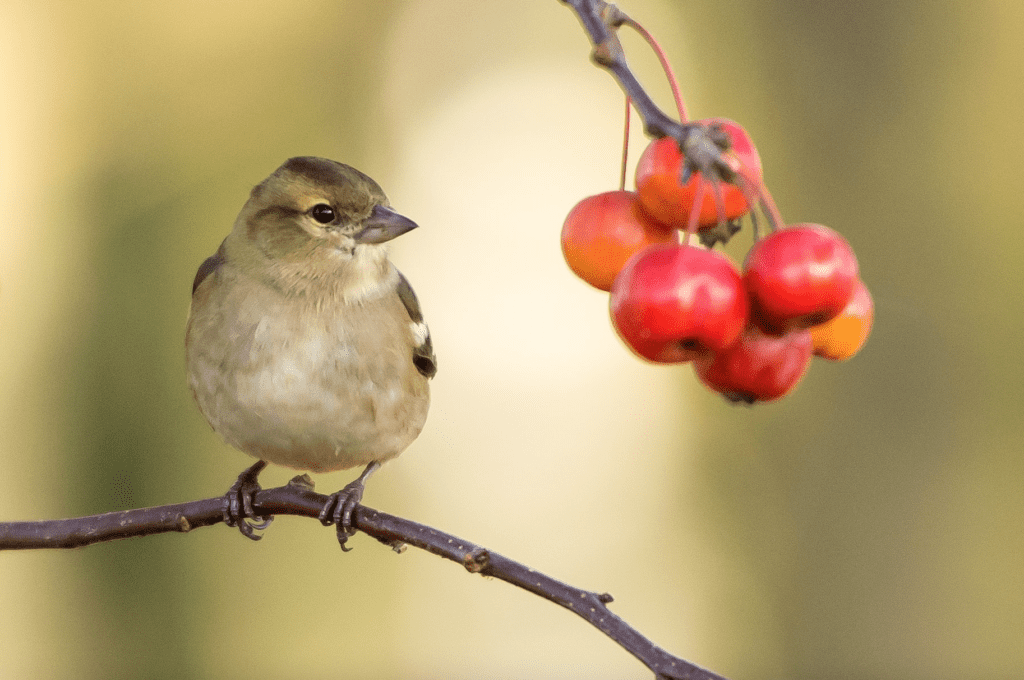
Red osier dogwoods are an excellent native choice for their beautiful spring blossoms, lush summer growth and vibrant red stems in winter. They also produce white berries in the fall that humans find unpalatable but many birds feast on.
Serviceberries (also known as saskatoon berries, shadbush, juneberry, and a whole host of other names) are a gorgeous large shrub that produce deliciously juicy berries. Well loved by humans and birds alike!
Douglas Tallamy has listed oak trees at the top of his keystone species lists, for the amount of caterpillar species the tree hosts, which in turn feed the bird populations. Others which make the list include poplars, birches, willows, and pines. I strongly recommend learning from his video below!
Leave some dead trees standing
Albeit unsightly at times, dead trees are essential for animal and insect life. Among multiple other benefits, they provide food and shelter for a vast array of creatures, also our beloved birds and bees!
So, if feasible in your yard, leave a dead tree standing. (Did you know a dead tree that is still standing is called a “snag”?) This blog post explains in detail when trees should be cut down and when they are safe to stay and support wildlife.
Provide habitat
Leave a pile of branches out in a back corner, or hidden away among some trees and shrubs. Birds love these for perching on, while caterpillars and other beneficial insects hibernate in old wood. And we know we need caterpillars for…you guessed it, feeding the birds!
Leaves and other litter left on the ground in fall provide perfect cover for hibernating bees. As we mentioned previously, logs and dead trees provide shelter to a great deal of species. If we can let go of our need to have everything looking perfectly tidy, we will be doing worlds of good for all these small creatures.
In conclusion
There you have it- now you’re equipped with the knowledge to go out and start transforming your space into a bird and bee sanctuary!
Happy Gardening!

